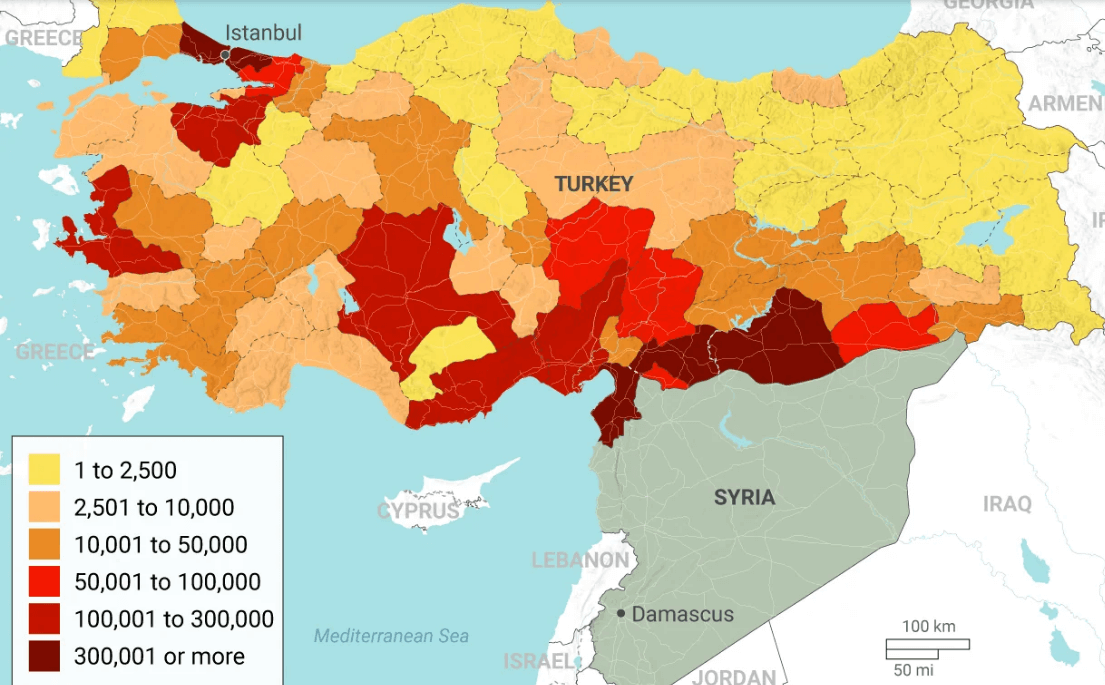
by Oğuz Arslan, Burak Giray, Niyazi Tuğ
SOURCE: New Lines Institute, UNHCR, 2023
Turkish Journal of Pediatrics 2024;66(1):32-41. DOI: 10.24953/turkjped.2023.812
Abstract
Background: Adolescent pregnant women have significant risk factors in terms of preterm birth, low birth weight, gestational and neonatal complications, and neonatal and infant deaths. In many countries, living as a refugee differs from living as a local citizen regarding education level, access to health services, and lifestyle. We aimed to compare the obstetric, perinatal, and neonatal outcomes of Turkish and refugee adolescent pregnant women admitted to a tertiary maternity center.
Methods: The study was planned as a retrospective cross-sectional. We included adolescent pregnant women who delivered between February 2018 and August 2023. Adolescent pregnant women were divided into two groups, the Turkish group and the Syrian refugee group, and compared with each other.
Results: One thousand and fifty-one (1,051) Turkish and 742 Syrian refugee adolescent pregnant women were included in the study. Adolescent pregnancy rates were higher in refugees than in the Turkish group (p < 0.001). We found that maternal age (p < 0.001), pre-eclampsia rates (p=0.029), gestational age at delivery (p < 0.001), and caesarean delivery rates (p=0.02) were lower in refugee adolescent pregnant women. Furthermore, we found that the anaemia rates (p < 0.001) and low birthweight newborn rates (p = 0.011) were higher in refugee adolescent pregnant women.
Conclusions: Enhancing the outcomes of adolescent pregnancies among refugees necessitates a heightened focus on education regarding sexual reproduction, increased antenatal visits, and enhanced information on family planning.
SOURCE: RAISE/IAWG LITERATURE REVIEW, 22 April 2024



